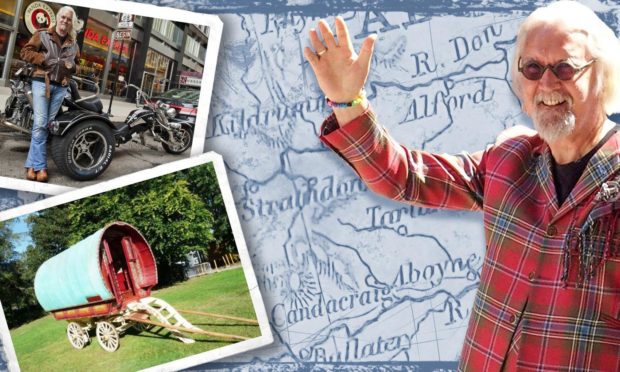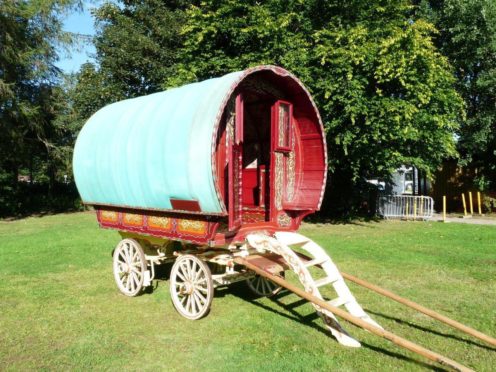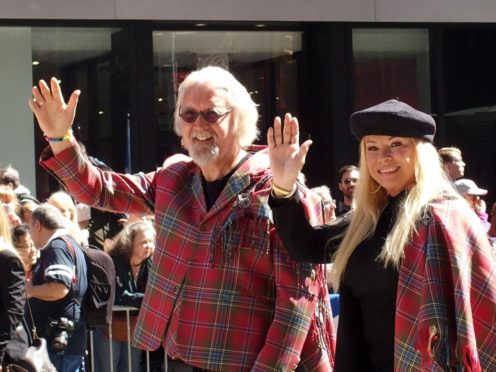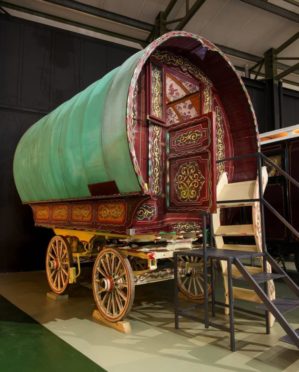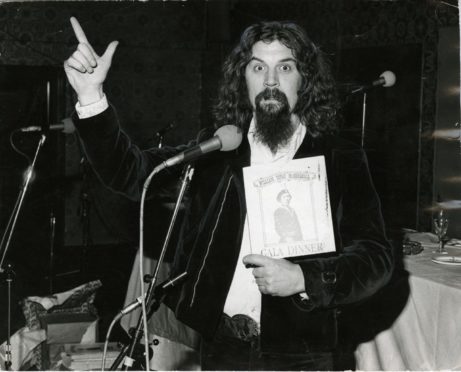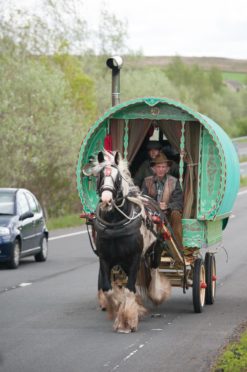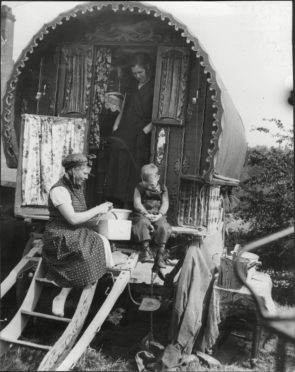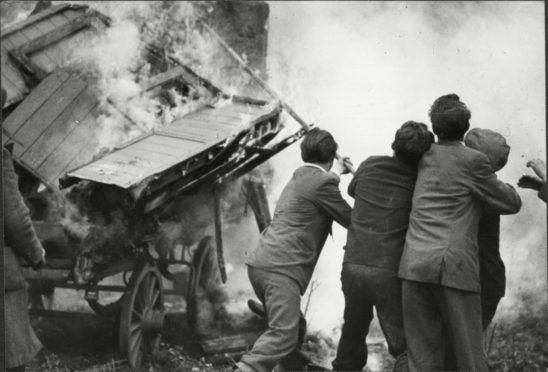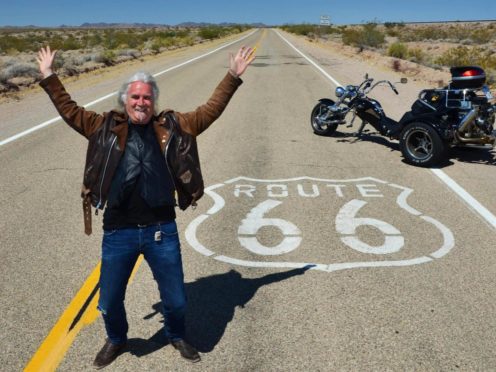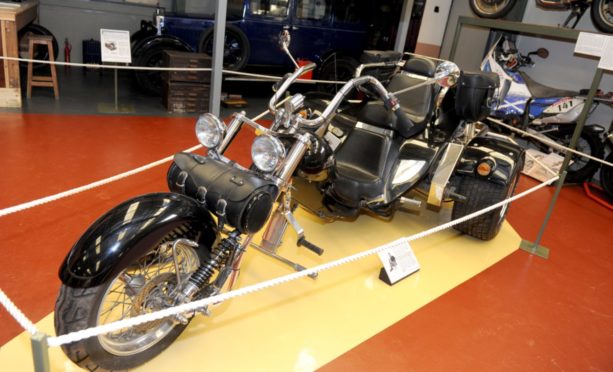A once-in-a-lifetime opportunity has arisen to buy a surviving Romany Gypsy caravan owned by comedian Billy Connolly.
The Big Yin is well-known for life in the fast lane with his globe-trotting motorcycle adventures, but clearly favoured the slow road while staying at his Aberdeenshire residence.
The beautiful bow-top caravan is a rare example of a traditional Romany horse-drawn home, and is thought to date from around 1900.
It was gifted to Connolly as a 60th birthday present from his wife Pamela Stephenson in 2002, and stood in their garden at Candacraig House in Strathdon for many years.
The vehicle was lovingly and expertly restored by the team at Grampian Transport Museum in Alford where it has since been on display.
But much like the nomadic existence of traditional Romany Gypsies, it is now time for the caravan to move on to pastures new.
The exquisite piece of Victorian craftsmanship is going under the hammer in a sealed-bid auction at Alford later this month.
‘Very popular exhibit’
The unusual lot is set to be the star of the show at the museum’s annual autojumble sale in Alford.
Museum curator Mike Ward said: “While Billy was still in Strathdon his people got in touch with us and asked if we wanted to display a couple of items of his from Candacraig, including the bow top caravan.
“We were told it was given to him by his wife Pamela as a 60th birthday present, but it was deteriorating and they asked if we could spruce it up a bit, and thereafter display it at the museum.
“We borrowed it from the Connollys, did a lot of repairs to it and rendered it robust.”
Mike and his team carried out extensive work on the historic vehicle, changing out the deteriorated original wooden ash undercarriage, the transom across the front and even made a new pair of horse shafts from ash.
The wagon was put back together and displayed at the museum in 2008 for three seasons where it proved to be a hit with visitors.
Mike said: “It was a very popular exhibit, especially with its nice, local provenance and connections with Billy Connolly, an A-list celebrity.
“After being on display we were suddenly donated another bow top caravan – a bigger, more serious one.
“We substituted Billy Connolly’s one for the bigger one as it was much more suitable for visitors to climb inside and have a look around.
“The real beauty of these things is the interior as they are made to be as homely and cosy as possible, because families actually did live in them.
“They weren’t just for fun like the shepherd’s huts you see today, whole families lived in them.
“They had a double bed across the back, bunk beds underneath for children, seating, a table, a stove, a hayloft at the back for the pony – and very little privacy.
“For some Romany families that’s all they would have.”
Traditional transport
From the highways to the byways, the Gypsy caravan represents a somewhat slower pace of life from a bygone era.
Conjuring up imagery of magic and intrigue from Enid Blyton stories, the wagons were usually highly decorated and engraved, and often associated with showmen and circuses.
The hand-built wooden caravans were commissioned by newlywed Gypsy Travellers as a means of horse-drawn transport and accommodation.
And the bow-top caravan is probably the most recognisable design with its curved roof, usually in a shade of green, to blend in with country surroundings.
Mike added: “The bow-top is a proper bow-top roof, not the thin cloth you might see on wagons in Westerns, it’s a thick cloth, lined with a quilt and highly decorated.
“It would have been very cosy inside, a bit like wrapping your house in a duvet – the wagons would have been very exposed to the elements.
“And outside it features painted decoration, like you’d see on a canal boat.
“Wagons like the Reading vardo, so called because they were built in Reading, were much more ornate than this one, featuring intricate wood carvings as well as paintings.
“Those were the wagons that would traditionally be burned after a Romany Gypsy’s death and few survive.
“But the simpler bow-top caravans were much more common up here.
“We don’t know much about this vehicle before Billy had it, but the chassis is original and dates from 1902 or 1903.”
The museum offered to return the wagon to the Connollys, who sold their Candacraig home in 2014, but now living in America they suggested the museum sold it for funds instead.
Big Yin’s local links
It’s not the first time one of the Big Yin’s belongings has been on show at the Alford museum.
A previous, popular exhibit included the much-loved funnyman’s distinctive Boom Lowrider motortrike from his tour around Britain in 2001.
The trike uses a VW Beetle engine that was tuned and fuel injected by a specialist garage in Banchory.
And it’s hoped the Connolly connection will prove as popular when it comes to selling the caravan.
Bidding has already started, but the sealed system means the bidders – and the offers – will remain a mystery until the day of the autojumble.
Mike said: “The wagon will appeal to some people because of its provenance with Billy Connolly and the local area.
“But it will also appeal to potential bidders who aren’t interested in the celebrity – just the fact it’s a fantastic vintage vehicle.
“It will be interesting to see who buys it and why; you could imagine it in someone’s garden, perhaps used as accommodation.
“The wagon has been well maintained and all the wood is treated, but it would be nice for it to go to a home where it will be looked after.”
The caravan is fully operational and mobile, and can be horse-drawn if any plucky purchasers fancy a Billy Connolly-style roadtrip – but firmly in the slow lane.
For more details about the Autojumble and information on how to bid for the wagon visit the Grampian Transport Museum website.
See more like this:
